So, you’ve got a padel club, and now you want to make it thrive. Whether you’re running a few courts or managing a growing complex, there’s one question on your mind: How do I grow my padel club?
Look, growing a padel club isn’t rocket science, but it’s also not a walk in the park. You’re dealing with players, events, competition, and a whole bunch of logistics. But if you play your cards right, your padel club can become the place for players to hit the court, have fun, and spread the word.
Before we dive into the nitty-gritty, here’s a quick spoiler: growth doesn’t come from just adding more courts. It’s about building a killer experience that makes players want to keep coming back—and tell their friends. It’s about creating a community, establishing a brand, and using the right strategies to keep things moving forward. Let's break down what it really takes to grow a padel club, one step at a time.
1. Know Your Audience: Who’s Playing at Your Club?
Here’s the thing: If you don’t know who’s walking through your club doors, you’re flying blind. And you know what happens when you fly blind? You crash. Hard. You might think, “Oh, it’s easy. My audience is padel players. Duh.” But that’s like saying all movies are the same because they play on a screen. Nope. Not even close.
Knowing your audience—really knowing them—is the first step to growing your padel club. Why? Because understanding who they are, what makes them tick, and what they need will shape everything you do. It’ll influence the events you plan, the services you offer, and even the vibe you create in your club. And if you can nail that, you’re already halfway to success.
Who Exactly Is Playing at Your Club?
Let’s break it down: Not all padel players are created equal. You’ve got different kinds of players walking through those gates, and each group has its own vibe, its own expectations, and its own level of engagement. So, who are these people? Glad you asked.
- The Casual Player
- This is the person who loves the game but isn’t hardcore about it. They’re the ones who book a court once a week (maybe) and treat padel like a fun social outing rather than an intense competition. For them, it’s more about hanging with friends and less about mastering a killer forehand.
- The Competitive Regular
- Ah, the heart and soul of your club. These are the folks who live and breathe padel. They’re playing several times a week, joining every tournament, and looking to improve their ranking. For them, padel is serious business, and they want a club that’s just as passionate about the game as they are.
- The Newbie
- These are the fresh faces—people who just discovered padel and are still figuring out the rules. They don’t yet know the difference between a lob and a smash, but they’re eager to learn. And if your club can hook them early, they’ll be loyal players for life.
- The Social Enthusiast
- This group sees padel as a way to network or hang out. They’re more about the post-game drinks than the game itself. But don’t underestimate them—they’ll bring friends, organize group sessions, and help spread the word about your club.
Each of these groups brings something different to the table. Your job is to figure out who you’ve got more of and how to cater to their specific needs. Because if you’re trying to treat a competitive player the same way you treat a casual one, you’re going to have some very unhappy members.
Why Knowing Your Audience Is the Key to Growth
So, why does this even matter? I mean, they’re all just playing padel, right? Well, yeah, but understanding your audience goes beyond just the game. Here’s how it helps your club grow:
- Better Events – If you know that most of your players are competitive, you can organize more tournaments with meaningful prizes. If they’re casual, maybe you lean into more social events or “fun” tournaments where the pressure’s off. And if they’re new, you can offer beginner-friendly clinics or lessons to ease them in.
- Tailored Services – Not everyone wants the same thing from your club. The competitive regulars might want high-performance training, while the casual players are more interested in easy online booking and chill game nights. When you know your audience, you can customize your offerings to give them exactly what they need.
- Better Marketing – Let’s face it: if you don’t know who you’re marketing to, you’re just throwing money down the drain. You want to reach the right people with the right message. If your players are mostly social types, your marketing should reflect that—focus on the community, the atmosphere, the good times. But if they’re hardcore players, hit them with details about your leagues, rankings, and the competition.
Engaging Your Players (aka Keeping Them Hooked)
It’s not just about knowing who they are—you’ve also got to keep them engaged. Because if you’re not giving your players what they want, they’ll bounce. Fast. Here are a few ways you can engage each group:
- The Casual Player – Make it easy for them. Convenience is key. They’re not going to spend hours figuring out how to book a court or join a game. They want a simple, hassle-free experience. Make sure your booking system is quick and painless, and maybe even throw in a few social events where they can just have fun without feeling the pressure to perform.
- The Competitive Regular – These players need to feel challenged. Set up ranking systems, organize frequent tournaments, and keep them updated on their stats. The more you feed into their competitive side, the more they’ll stick around. Oh, and make sure your courts are top-notch. These players will notice (and complain about) every little detail.
- The Newbie – New players can feel intimidated, so make your club feel welcoming. Offer beginner lessons, have staff on hand to answer questions, and create a judgment-free environment where they can learn at their own pace. If you nurture these players, they’ll grow into your future regulars.
- The Social Enthusiast – For these players, it’s all about the vibe. They want a club that feels like a second home, where they can come, hang out, play a little padel, and maybe have a drink afterward. Make sure your club has a social atmosphere—think about having a lounge area, organizing social nights, or even creating a members-only WhatsApp group to keep them connected.
How to Figure Out Who’s Playing at Your Club
Okay, so now you know you need to understand your audience, but how do you actually figure out who they are? It’s not like people come with labels saying “Hey, I’m a social player!” Fortunately, there are a few ways to gather intel:
- Surveys – Ask your members directly. Send out a survey to find out how often they play, what they like about the club, and what they’d like to see improved. You’d be surprised how much people are willing to share when you ask them.
- Look at the Data – If you’ve got an online booking system, dig into the data. Who’s booking courts the most? What time slots are most popular? Are they booking for casual games or tournaments? Use this information to identify trends and adjust your offerings.
- Talk to Your Members – Sometimes, the old-fashioned way works best. Spend time at your club and talk to the players. Get to know them, ask about their experience, and find out what they’re into. You’ll get a lot of valuable insight just by being present and engaged.
Know Them, Grow Them
Growing your padel club starts with knowing your audience. When you understand who your players are and what they need, you can create a club that caters to them in ways they won’t find anywhere else. And when you get that right, your players will keep coming back—and bringing their friends with them.
So, if you’ve been wondering why your club isn’t growing as fast as you’d like, take a step back and ask yourself: Do I really know my audience? If the answer’s no, it’s time to start paying attention. Because once you figure out who’s playing at your club, you’ll know exactly what to do to keep them coming back for more.
2. Create an Unforgettable Player Experience
Alright, let’s get real for a second. Your players aren’t just coming to your padel club because they love hitting a ball over a net. If that were the case, they’d be just as happy playing in some dingy court with crumbling walls and terrible lighting. But they’re not. They’re showing up at your club because they want more than just a game—they want an experience.
Think about it: Have you ever walked into a place and felt like, “Yeah, I belong here”? That’s what you’re aiming for. The clubs that grow and thrive are the ones that make every single visit unforgettable. It’s like a mini-vacation from everyday life, except with a racket in hand. And if you can create that vibe, you’re golden.
More Than Just Courts: Creating the Vibe
First off, let’s talk about the physical space. Your club doesn’t need to be the Ritz-Carlton of padel courts, but it also shouldn’t feel like a prison exercise yard. The atmosphere you create is a huge part of the experience. Warm lighting, clean facilities, and a welcoming vibe go a long way. I’m not saying you need to roll out a red carpet, but when players walk in, they should feel excited to be there. That sense of arrival is crucial.
And then there’s your staff. Let me be clear: your staff can make or break the player experience. You need people who actually care about the players and know how to make them feel welcome. No one’s going to remember that the courts were perfectly maintained if the person at the front desk greeted them like they were an inconvenience. Friendly, helpful, and maybe even a little funny—your staff should set the tone for what kind of experience players are about to have.
Seamless Events = Happy Players
If you’re hosting events—and you absolutely should be—then seamless organization is key. Players don’t just want to show up, play, and leave. They want events that are smooth, well-organized, and fun. The moment there’s confusion about match times or a hiccup in the schedule, the whole thing can fall apart. It’s like throwing a party and running out of drinks halfway through.
Here’s a trick: make it easy for players to know exactly what’s going on. Have clear schedules, easy-to-use booking systems, and real-time updates. No one wants to be left guessing when their match is or, worse, feel like they’ve been forgotten. The more seamless the experience, the more fun everyone will have.
The Personal Touch: Why It Matters
Ever had an experience where the staff actually knew your name? It’s pretty awesome, right? That little personal touch goes a long way. People love feeling like they’re part of something, not just another body filling up the court.
Encourage your staff to get to know the regulars. Remember who prefers to play at what time, who’s obsessed with doubles, or who just won their first tournament. These small details turn a regular padel club into a place where people feel known and valued. And when players feel valued, they’ll keep coming back.
The Little Extras That Make a Big Difference
Want to go the extra mile? Add some little perks that make people feel special. Think of these as the sprinkles on top of the experience sundae. Maybe it’s offering a free coffee after a morning session or giving members a heads-up about exclusive events before anyone else knows. These small gestures might not seem like much, but they build loyalty over time.
And while we’re at it, consider giving players more than just a game. Have a lounge area where they can hang out after matches, grab a drink, or even watch other games. The social aspect of padel is huge. People aren’t just there to sweat; they’re there to connect, unwind, and share a laugh. Create spaces where that can happen, and your club becomes more than just a place to play—it becomes a community.
Listen to Your Players
Here’s a wild idea: ask your players what they want. It sounds simple, but you’d be amazed at how many clubs just assume they know what’s best for their members. Spoiler: sometimes you don’t. Listen to their feedback. Whether it’s through surveys, casual conversations, or an old-school suggestion box, give your players a voice.
Maybe they want more tournaments. Maybe they want earlier booking times or new equipment. Whatever it is, taking their feedback seriously makes players feel heard and respected—and that’s an unforgettable experience in itself.
It’s the Experience That Counts
At the end of the day, padel players have choices. There’s always another club, another court, or even another sport they could pick up. What’s going to set your club apart is the experience you create. It’s not just about winning or losing matches; it’s about how players feel every time they walk through your doors.
Create an experience they can’t find anywhere else, and your club will not only grow—it’ll thrive. And who knows? You might even start getting those “regulars for life” who bring their friends along for the ride. Because let’s be real: a great game is awesome, but an unforgettable experience? That’s what players keep coming back for.
3. Build a Strong Brand That Players Trust
Let’s cut straight to it: you’re not just running courts, organizing tournaments, or managing schedules. You’re building a brand. And here’s the thing about brands—they’re everything. Your brand isn’t just a logo or a catchy name on a sign; it’s what people think of when they hear about your club. It’s how they feel when they walk through your doors and why they tell their friends to come along. In the world of padel, where competition is only growing, your brand is what’s going to make your club stand out.
Why Your Brand Matters (More Than You Think)
Most club owners don’t think of themselves as brand builders. They’re focused on the courts, the members, the events—and that’s great. But here’s the deal: without a strong brand, your club is just another place to play. And players? They’ll move on faster than you can say “let’s play another set” if there’s no emotional connection.
A strong brand is what turns a one-off visit into a regular commitment. It’s what gets people to wear your club’s gear, follow your updates, and tell everyone they know about how awesome your padel club is. You want your club to be the first name that pops up when someone says, “I’m thinking of playing padel. Where should I go?” That’s the power of brand recognition.
Your Brand Is More Than a Logo
First off, let’s put this to bed: a brand is NOT just a logo. Sure, your logo’s important. It’s the visual cue that people recognize. But your brand goes way beyond that. It’s the entire personality of your club. Think of your favorite brands—Nike, Apple, whatever. It’s not just about their swoosh or sleek design. It’s about how they make you feel.
In the case of your padel club, your brand is built on the experience players have. It’s the vibe they get when they walk in, the quality of the courts, the professionalism of your staff, the events you organize, and the way you communicate with them. Every single interaction players have with your club shapes your brand. So, you’ve got to make sure that every detail is working towards creating a brand that players can trust.

Building Trust Through Consistency
One of the biggest pillars of a strong brand? Consistency. Players need to know what to expect when they come to your club. If the experience is amazing one week and sloppy the next, they’ll start to lose trust. And when trust goes, so does your chance of building loyalty.
Consistency means delivering a great experience every single time. Whether it’s keeping the courts in perfect shape, ensuring your staff is always friendly and welcoming, or running events that start and end on time, it’s about making sure every detail is reliable. It’s like being in a relationship—you wouldn’t trust someone who’s hot and cold all the time. Your players are the same. They want stability and to know that your club has its act together.
The Power of Storytelling
People love stories. They connect with them. And your padel club has a story to tell. Maybe it’s how you started the club after falling in love with the sport. Maybe it’s about how you’ve built a community of players who genuinely support each other. Whatever it is, sharing your club’s story helps build that emotional connection. When people feel like they’re part of your story, they’ll be more loyal and more likely to spread the word.
You don’t have to go all out with some epic saga—just be real. Share why you started the club, what you’re passionate about, and what your goals are. Use your website, social media, and events to weave your story into the experience. Authenticity is key here. Players can tell when you’re being genuine, and they respond to that. If you’re just throwing out marketing buzzwords, they’ll tune out. Keep it real, and your story will resonate.
Build a Brand Players Want to Talk About
Word of mouth is your secret weapon. A strong brand gets people talking, and when players start talking, your club starts growing. But to get there, you need to create something worth talking about. It’s not just about having great courts (although that helps). It’s about the entire experience—the friendly staff, the smooth events, the vibe that makes people want to hang out before and after their games.
And here’s the thing: people love sharing their experiences, especially good ones. If your club gives them a standout experience, they’ll tell their friends, they’ll post about it on social media, and they’ll bring new people along. That’s how you build a brand that grows organically—by making it so good, players can’t help but talk about it.
Your Players Are Your Best Brand Ambassadors
You can spend all the money in the world on marketing, but the best brand ambassadors you have are your players. When players love your club, they’re going to promote it without you even asking. They’ll wear your branded shirts, they’ll check in on social media, and they’ll tell their buddies to join them for a game.
Encourage this. Give your players a reason to want to represent your brand. Offer cool merchandise, create social media challenges, or feature players in your online content. The more you involve your players in your brand, the more they’ll feel connected to it.
It’s About Trust, Not Just Hype
Let’s be real: there’s a lot of hype around branding. Everyone’s telling you to “build a brand” and “create buzz,” but hype without substance is just noise. What matters most is trust. Players need to trust that your club is the best place to play. They need to trust that they’ll have a great experience every time. And trust takes time to build.
So, don’t get caught up in trying to create the most buzzworthy brand out there. Focus on delivering quality and consistency first, and the rest will follow. Trust me, players don’t want empty hype—they want a club they can rely on.
Brand Like a Pro
At the end of the day, your padel club is more than just a place to play—it’s a brand. And building a brand players can trust takes time, consistency, and authenticity. It’s about more than a cool logo or a flashy website. It’s about creating an experience that players want to be a part of and tell others about.
So, think of your brand as a long game. Focus on delivering a great experience, telling your story, and being consistent. Build trust with your players, and watch as they turn into your biggest advocates. And once that happens? Your club’s growth will practically take care of itself.
4. Leverage Technology: From Online Booking to Club Management
Let’s face it: no one likes waiting in line or making a phone call just to book a court. In today’s world, people expect convenience. Everything is just a tap away, and your padel club should be no different. Whether it’s reserving a court, tracking scores, or checking out upcoming events, technology can make your club more accessible, efficient, and—dare I say it—modern.
If you’re still running your club like it’s 1995, you’re going to struggle. Players don’t have the patience for outdated processes, and they’ll find a club that’s easier to interact with. So, how do you leverage technology to make sure your padel club is as user-friendly as it gets? Let’s dive in.
Online Booking: Convenience at Your Players' Fingertips
First things first: if you don’t have an online booking system, you’re already behind. Players don’t want to call or show up hoping a court is available—they want to be able to book their slot in seconds from their phone, tablet, or computer.
A solid online booking system lets your players see availability in real time, reserve a court, and even pay upfront if needed. It’s quick, it’s painless, and it eliminates all that back-and-forth. Plus, from your side, it’s easier to manage court reservations without worrying about double-bookings or missed slots.
Here’s a bonus: An easy-to-use booking system can actually boost court utilization. If players can check availability on the fly, they might be more likely to snag that open slot, even if it’s last minute. More court usage equals more revenue for your club. Win-win.
Score Tracking: For the Data-Obsessed Player
We’re in the age of data, and padel players are no different. Competitive players want to track their performance, analyze their stats, and see how they stack up against others. Giving them the tools to do that makes your club more than just a place to play—it makes it a place to improve and grow.
With score tracking, players can log their games, see their win/loss records, and monitor their progress over time. Some advanced systems even allow for live score updates during tournaments, so fans and friends can follow along in real time. If your club can offer this kind of tech, you’re going to attract the competitive crowd and keep them engaged.
And it’s not just about the competitive players. Even casual players get a kick out of seeing their progress. They might not be chasing rankings, but knowing they’re improving their game adds another layer of fun to the whole experience.
Club Management Software: Streamline the Chaos
Running a padel club isn’t just about booking courts and organizing tournaments—there’s a whole back-end operation that keeps the place running. From managing memberships and tracking payments to scheduling staff and organizing events, the logistics can get pretty intense.
Enter club management software. This is the secret sauce to making your life a whole lot easier. Club management systems can automate a lot of the tedious tasks that eat up your time, like tracking player memberships, sending payment reminders, or scheduling staff shifts. It centralizes everything into one easy-to-manage platform, so you don’t have to juggle spreadsheets, emails, and a hundred other things at once.
The less time you spend buried in admin work, the more time you can spend focusing on growing your club and delivering a better experience for your players.
Social Media: Your Free (and Powerful) Marketing Tool
If your club isn’t on social media, you’re missing a huge opportunity. It’s 2024—everyone is online, and if you’re not engaging with your community there, someone else is. Social media isn’t just about posting photos of your courts (although, please do that)—it’s about building relationships, creating buzz, and keeping players in the loop.
Here’s the trick: you don’t have to be everywhere. Pick one or two platforms where your audience hangs out and focus on those. Instagram, for example, is perfect for sharing highlights of events, player achievements, and daily club activities. Facebook groups can be great for building a sense of community and keeping members updated on events or court availability.
The best part? It’s free. You can reach hundreds or even thousands of potential players without spending a cent. And if you want to take it up a notch, you can run targeted ads to reach more local players.
The key to social media is consistency. Post regularly, interact with your followers, and give them a reason to stay engaged. It’s one of the easiest ways to build your brand and grow your club.
Apps and Wearables: The Future of Player Engagement
We’re living in the era of apps and wearables, and if you’re not taking advantage of that, you’re missing out. Whether it’s an app for your club where players can check schedules, book courts, and track their progress, or wearable tech that tracks their performance on the court, these tools make the padel experience more interactive and engaging.
Some clubs are even integrating apps that allow players to challenge each other, track leaderboards, or set up matches. This kind of tech not only keeps players engaged, but it also builds a community around your club.
And let’s not forget wearables. Players love tracking their fitness and performance, so why not make your club compatible with the latest gadgets? Allow players to sync their games, monitor their stats, and even compare their progress with others. It’s another way to enhance the overall experience and keep players coming back for more.
Tech is Your Best Friend
Look, padel is an ancient game (okay, maybe not ancient), but we’re living in a modern world. If you’re not leveraging technology, you’re doing your club and your players a disservice. From online bookings and score tracking to social media and apps, technology makes your club more efficient, more accessible, and more engaging.
Embrace it. Use it to streamline your operations, give your players a better experience, and grow your club in ways you hadn’t even thought of. At the end of the day, tech isn’t just a luxury anymore—it’s essential. And the sooner you get on board, the faster your club will grow.
5. Host Events that Players Can’t Resist
Let’s be real: nothing gets people pumped up like a well-run event. If you want to grow your padel club, hosting events that people can’t stop talking about is an absolute must. And we’re not just talking about the occasional tournament—you need to throw in some variety, some creativity, and maybe a little chaos (the good kind) to keep things interesting.
Events are a chance to show off your club, engage your members, and attract new ones. Themed tournaments, social mixers, charity games—these are the lifeblood of a thriving padel community. So, how do you create events that players can’t resist? Let’s break it down.
The Power of a Great Tournament
Tournaments are the bread and butter of any sports club, but here’s the kicker: not all tournaments are created equal. A boring, poorly organized event will turn people off faster than a rainy day on an outdoor court. But a well-run, exciting tournament? That’s the stuff that brings players back for more.
First, make sure your tournaments are well-organized. Sounds obvious, but you’d be surprised how many clubs drop the ball here. Clear schedules, fair match-ups, and real-time score updates go a long way. If players have to guess when their next game is or who they’re playing against, they’ll lose interest pretty quickly. And worse, they might not come back next time.
But it’s not just about being organized—you’ve got to make it fun. Sure, the competitive players are there to win, but don’t forget about the casual players who are just looking to have a good time. Offering different skill levels, fun prizes, and even themed tournaments can turn a regular tournament into something memorable.
Oh, and don’t forget about the spectators. Set up a spot where friends and family can watch the action, maybe with some refreshments or music. The more people you can get involved—players and non-players alike—the bigger the buzz around your event.
Themed Events: Because Who Doesn’t Love a Little Extra Fun?
Let’s face it: people love a theme. Whether it’s an 80s night, a Halloween costume tournament, or a “Battle of the Sexes” event, themed tournaments are an easy way to spice things up. And here’s the best part: they’re not just for the competitive players. Themes make the event more accessible and fun for everyone, from newbies to regulars.
Themed events also give players something to look forward to beyond just the competition. They add a social element that makes your club feel more like a community rather than just a place to play. Plus, themes are incredibly shareable. You’ll see players snapping photos in their costumes or matching team gear and sharing it all over social media, which is basically free marketing for your club.
And don’t think you have to stick to traditional themes either. Get creative. Maybe a “lights-out” night with glow-in-the-dark balls and wristbands. Or how about a doubles tournament where partners are randomly assigned after each round? Anything that makes the event stand out from your standard fare will keep people interested and coming back for more.
Social Mixers: Building Connections Off the Court
Not every event needs to be a high-stakes tournament. Sometimes, players just want to hang out, meet new people, and have a good time. That’s where social mixers come in. These events are more relaxed, focusing on the social aspect of padel rather than pure competition.
Think of social mixers as the perfect opportunity for new members to integrate into the community. You could host a “Meet & Play” night where you pair up random players for a few friendly games, followed by drinks and snacks. It’s low pressure, fun, and helps build connections off the court, which in turn strengthens your club’s sense of community.
Social events are also fantastic for retention. If players feel like they’ve made friends at your club, they’re much more likely to stick around. And as a bonus, it gives them an excuse to bring non-playing friends along. Who knows? Those friends might just decide to pick up a racket and join the fun next time.
Charity Tournaments: Play for a Cause
Want to give your club a reputation for doing good? Host a charity tournament. Players love the idea of competing for a cause, and it adds an extra layer of motivation to sign up. Plus, charity events tend to draw in a wider crowd, including people who might not normally come to your club.
Choose a local cause that resonates with your community and promote the heck out of it. Get local businesses involved as sponsors, offer raffle prizes, and turn it into a whole event. Charity tournaments aren’t just about the games—they’re about bringing people together for something bigger than just the competition.
The goodwill and exposure you’ll generate from hosting charity events will reflect positively on your club and can help attract new members who want to be part of a community that gives back.
Keep It Fresh: Variety is Key
If you’re always hosting the same type of event, players are going to get bored. The key to keeping them engaged is variety. Rotate between competitive tournaments, fun themed events, and relaxed social mixers. Maybe throw in a skills clinic or a pro exhibition match every now and then to keep things interesting.
The more diverse your event lineup, the more people you’ll attract. Some players might only come for the social mixers, while others live for the intense competition of tournaments. By offering a mix, you’re catering to everyone—and that’s how you keep your club buzzing with activity all year long.
Promote, Promote, Promote
You could have the best event in the world planned, but if no one knows about it, you’re playing to an empty court. Promotion is key. And I don’t just mean throwing up a flyer at the club entrance. You’ve got to use all the tools at your disposal—social media, email newsletters, WhatsApp groups, you name it.
Start promoting your event early and keep the momentum going. Build hype by sharing teaser posts, offering early-bird registration discounts, or even dropping a few hints about surprise prizes. The goal is to get people excited well before the event even starts. The more buzz you can generate, the bigger the turnout will be.
Events Are Your Secret Weapon
If you want to grow your padel club, hosting irresistible events is one of the best ways to do it. Tournaments draw in competitive players, themed events keep things fresh, and social mixers help build that all-important sense of community. Plus, events give players a reason to bring their friends along, which can lead to new memberships and a thriving club atmosphere.
So, get creative. Mix things up. And most importantly, make sure your events are well-organized, fun, and easy for players to enjoy. Do that, and you’ll be hosting packed-out events in no time.
6. Foster a Strong Community Culture
Let me tell you a little secret: people don’t just join padel clubs for the sport. Sure, they love the game. They want to improve their forehand and crush their backhand. But deep down, they’re really looking for something more—a sense of belonging. They want to be part of something bigger than just a collection of courts and balls. And that’s where fostering a strong community culture comes in.
Here’s the deal: growth isn’t just about packing your courts with more players or signing up as many members as possible. It’s about building a community that people actually want to be part of. When you create a culture where players feel welcome, included, and connected, you’re not just growing your club—you’re building loyalty that runs deep. And loyalty, my friend, is the backbone of sustainable growth.
Create an Atmosphere Where Everyone Belongs
This isn’t about putting up a "Welcome" sign and calling it a day. It’s about creating an atmosphere where people genuinely feel like they belong. A place where players—whether they’re total newbies or seasoned pros—feel like they’re part of a community, not just customers in a transactional relationship.
Start by making sure your club is welcoming to everyone. And I mean everyone. That includes beginners who might be a little intimidated to walk onto the court for the first time, and competitive players who are there to win but still want to feel like they’re part of the club, not just lone wolves.
Encourage your staff to greet players by name, ask about their progress, and show genuine interest in their experience. Small interactions like these build a sense of community that goes beyond just booking courts and playing matches.
Build a Space for Social Connection
Padel clubs aren’t just places to play—they’re places to connect. And if you want to foster a strong community, you need to give people the opportunity to get to know each other outside of matches. That’s where creating social spaces comes in.
Whether it’s a lounge area where players can relax after games, a small café where they can grab a coffee, or just some comfy chairs and a couple of tables where they can hang out, these spaces are crucial. They give players a chance to connect, share a laugh, and talk about more than just padel. And when people feel connected to others at your club, they’ll keep coming back for those relationships as much as the game.
Organize casual hangouts after tournaments or set up regular social nights. These events don’t have to be elaborate—a simple get-together with drinks and snacks can do wonders for fostering a community atmosphere.
Encourage Inclusivity (It’s Non-Negotiable)
You’ve got to make your club a space where everyone feels welcome. Inclusivity should be at the core of your community. That means making sure all players, regardless of skill level, gender, or background, feel like they belong on your courts.
You can start by offering events or tournaments for all levels—like beginner-friendly socials or mixed doubles games where anyone can join, regardless of ability. It’s about creating a space where people don’t feel left out or excluded because they’re not playing at a certain level or don’t know anyone.
And here’s the thing: when you create an inclusive environment, word spreads. People talk about how friendly and open your club is, and soon, more players will want to join because they know they won’t be judged or left out. Inclusivity builds trust, and trust builds loyalty.
Give Your Members a Voice
Want to know what makes people feel truly connected to your club? Giving them a say in how things are run. When players feel like their voices are heard, they become more invested in the success of the club.
One way to do this is by regularly asking for feedback. You can send out surveys, have casual chats with members, or even set up a suggestion box (old school, but it works). Ask them what’s working, what’s not, and what they’d like to see more of. Whether it’s about the types of events you host, the facilities, or just general improvements, showing that you care about their opinions strengthens the community.
And here’s the kicker: act on the feedback. It’s not enough to just ask for opinions—you’ve got to implement the changes they’re asking for (within reason, of course). When members see that their suggestions are being taken seriously, they’ll feel more connected to the club. They’ll feel like they’re part of something they’ve helped shape, and that’s powerful.
Build Traditions (Yes, It’s a Thing)
If you want to create a real sense of community, you’ve got to build traditions. I’m talking about events, rituals, or quirky customs that become part of the fabric of your club’s culture. Traditions give members something to look forward to, something that ties them together.
Maybe it’s an annual tournament that’s become legendary among your members, or a silly tradition where every new member gets to hit a ceremonial “first serve.” Whatever it is, these little traditions make your club feel like a special place. And when people feel like they’re part of something unique, they’re more likely to stick around.
Community Isn’t Just Inside the Club
Here’s the thing about community: it doesn’t have to stop at the club doors. Get involved in the local area, support nearby businesses, and encourage your members to do the same. Host charity events, sponsor local causes, or organize community outreach programs that get your club’s name out there.
When your club becomes known for giving back and supporting the broader community, it builds goodwill—and that kind of positive reputation goes a long way. Plus, it attracts new members who want to be part of something that’s making a difference.
It’s Not Just a Club, It’s a Community
If you really want to grow your padel club, don’t just focus on increasing the number of players or hosting more events. Focus on creating a strong, tight-knit community where people feel like they belong. Build a space where players connect, make friends, and come back week after week because they’re part of something bigger than just a padel game.
Fostering a strong community culture isn’t just a nice-to-have—it’s a must. When your club feels like a welcoming, inclusive, and supportive community, players will become loyal members. And when they’re loyal, they’ll keep coming back, bringing their friends, and spreading the word. That’s how your club grows, and that’s how it thrives.
7. Effective Ways to Market Your Padel Club
Alright, let’s get down to it—if no one knows your padel club exists, it might as well not. You could have the best courts, the most amazing events, and a killer community culture, but if people aren’t hearing about it, you’re going to end up with empty courts. And nobody likes an empty court. That’s why marketing is non-negotiable. You’ve got to get your club out there and make some noise.
Now, I know what you’re thinking: “Marketing? Ugh, do I really have to?” Yes. Yes, you do. But here’s the good news: it doesn’t have to be some complicated, soul-sucking process. With a few smart strategies, you can reach the right players, fill your courts, and grow your club without losing your mind (or your wallet).
Local Outreach: Start in Your Own Backyard
Before you dive headfirst into digital marketing and social media, let’s talk about the power of good old-fashioned local outreach. Your immediate community is your first and most obvious pool of potential players. So, make sure they know who you are and what you’re about.
Start by connecting with local businesses. Maybe the nearby gym, yoga studio, or café would be open to promoting your club in exchange for some cross-promotion. Leave flyers, offer special discounts for their customers, or even organize a “Padel Day” where their staff and clients can come play for free.
You can also reach out to schools, community centers, and local sports clubs. Offering clinics or free lessons for beginners can be a great way to get people through the door. Once they’ve experienced the fun of padel at your club, they’ll be much more likely to return for more.
Social Media: Your Free (and Powerful) Marketing Machine
We touched on this earlier, but let’s dive deeper. Social media is one of the most effective (and free!) tools in your marketing toolkit. It’s how you reach new players, keep current ones engaged, and show the world how awesome your club is. And the best part? You don’t need to be a marketing guru to do it well.
First, pick your platform. Instagram is great for sharing action shots of games, highlighting players, and giving sneak peeks of upcoming events. Facebook works well for creating event pages and community groups where your members can interact and stay updated. TikTok? If you’re feeling adventurous, short clips of cool plays or fun challenges could grab a younger audience.
Here’s the trick: be consistent. Post regularly, interact with your followers, and keep things fun and engaging. Showcase what makes your club unique—whether it’s your tournaments, your community vibe, or just the sheer fun of padel. The more you share, the more people will want to be part of the action.
And don’t be afraid to get creative with your content. Try running social media contests, like “Best Padel Shot of the Week” or offering small prizes for followers who share your posts. The more people interact with your content, the wider your reach becomes.
Email Marketing: Keep Your Members in the Loop
Email might seem old-school in the age of TikTok and Instagram, but it’s still one of the most effective ways to keep your members engaged. With email, you’re speaking directly to your players—and that’s powerful.
Build an email list by encouraging players to sign up on your website or social media channels. You can offer incentives like discounts on court bookings, exclusive event invites, or early access to tournaments to sweeten the deal.
Once you’ve got your list, use it wisely. Send out regular updates about upcoming events, special offers, or club news. Don’t just hit them with generic promotions—make it personal. Highlight player achievements, share fun facts about the club, or even do a “Player of the Month” feature. The more personal and engaging your emails, the more players will look forward to reading them.
Paid Ads: When You Want to Go Big
If you’ve got a bit of budget to play with, paid advertising can give your club a serious boost in visibility. Facebook and Instagram ads are great options because you can target specific groups—like people in your local area who are into sports or fitness.
The best part? You don’t need to spend a fortune. Even a small budget can go a long way if you’re targeting the right audience. Just make sure your ads are clear, eye-catching, and have a strong call-to-action. Whether it’s signing up for a free lesson, joining a tournament, or booking a court, make it super easy for people to know what to do next.
And remember, ads work best when they’re backed up by a great landing page or offer. If you’re running a special promotion, make sure the page they land on is clear, simple, and gives them exactly what they came for.
Collaborate and Partner Up
Why go it alone when you can team up with others? Partnering with local businesses, influencers, or even other sports clubs can be a game-changer. It’s a great way to tap into new audiences without doing all the heavy lifting yourself.
Find a local influencer or social media personality who’s into sports or fitness and see if they’d be interested in promoting your club. They could share their experience playing at your courts, attending your events, or even just hanging out at the club. Influencers have the trust of their followers, and a recommendation from them can do wonders for your club’s visibility.
Or, try partnering with other sports clubs in your area. Maybe the local tennis or squash club would be interested in hosting a “Padel vs. Tennis” event or a crossover tournament. It’s a fun way to mix things up and introduce new players to your club.
Build a Killer Website
In today’s world, your website is your club’s digital storefront. It’s the first place potential players will go to learn more about you, and if it’s outdated or confusing, they’ll bounce faster than a padel ball in play.
Your website needs to be clean, user-friendly, and packed with all the information players need—like how to book courts, details on events, and membership options. But beyond just functionality, your website should reflect the vibe of your club. Use images and language that capture the essence of your community.
Oh, and don’t forget about SEO (Search Engine Optimization). Optimizing your site with the right keywords (think “padel club near me” or “padel tournaments”) will help you show up in Google searches and attract local players who are looking for a place to play.
Marketing Isn’t Magic—It’s Strategy
If you want to grow your padel club, marketing is the key to unlocking that growth. But here’s the thing: marketing isn’t magic. You can’t just slap a few posts on Instagram or run an ad and expect your courts to be full overnight. It’s about being strategic, consistent, and—above all—genuine.
Whether it’s local outreach, social media, email, or paid ads, your marketing efforts need to reflect what makes your club special. Highlight the community you’re building, the events you’re hosting, and the fun you’re offering. When people see the value in your club, they’ll want to be part of it—and that’s how you keep your courts full.
8. Expand Strategically: When and How to Grow Physically
So, your padel club is thriving. Courts are booked solid, your events are packed, and you’re starting to think about the next big move. Maybe it’s time to add more courts or expand your facilities. But before you go breaking ground and doubling your square footage, let’s talk about when and how to expand in a way that actually makes sense for your club.
Because here’s the deal: expanding too early or too fast can sink your ship. Just because you’re seeing success now doesn’t mean you should throw caution (and a bunch of money) to the wind. Growth is great, but sustainable growth is where the magic happens. Let’s figure out how to do this strategically.
When Should You Expand?
The big question is: when’s the right time to expand? It’s easy to get excited when things are going well, but expanding just because it feels like the next step can be risky. You need clear indicators that your club is ready for physical growth.
- Demand Is Outstripping Supply
This is the most obvious sign. If you’ve got players constantly on waiting lists, events selling out in minutes, and your courts are booked from open to close, then you’re probably ready to expand. When players can’t get a court at your club, they’ll start looking elsewhere—and that’s revenue you don’t want to lose. - You’ve Maximized Your Current Space
Before expanding, make sure you’re getting the most out of your current setup. Are your courts being used efficiently? Have you optimized your schedule to squeeze in as many games and events as possible? If you’re already at peak efficiency and still can’t meet demand, then expanding is a logical next step. - Your Revenue Can Support It
Expansion isn’t just about building more courts—it’s about sustaining them long-term. Make sure your club’s finances are in a healthy place before making any big moves. You should have a steady stream of income that can cover the costs of expansion without draining your resources. Expansion is an investment, and it needs to be a smart one.
How to Expand: The Right Way to Grow
So, you’ve decided it’s time to grow. Now what? Expanding a padel club isn’t just about slapping on a few more courts or opening a new location. You’ve got to plan it out so that your growth is sustainable and doesn’t dilute the quality of experience that’s brought players to your club in the first place.
- Start with a Plan (A Real One)
Expanding without a solid plan is like playing padel without a racket—it’s not going to end well. Sit down and map out exactly what your expansion will look like. How many new courts do you need? Will you add more seating for spectators? Is there space for a lounge or café to enhance the player experience? Think about how the expansion will benefit both your club and your members. - Consider the Logistics
Adding more courts sounds great until you realize there’s no room for them, or worse, you haven’t thought about the parking situation. When expanding, consider the logistics. Do you have enough space? Will you need additional staff? How will it impact other areas of the club, like locker rooms, restrooms, or parking? Don’t just focus on the new courts—think about the entire experience. - Don’t Sacrifice Quality for Quantity
Sure, you could add a ton of new courts, but if they’re crammed together with no space for spectators or players to relax, you’re going to lose that special something that made your club great in the first place. Quality matters. Your expansion should enhance the player experience, not just add more courts for the sake of it. - Expand in Phases (If Possible)
Going all-in on expansion can be overwhelming—financially and logistically. If possible, consider expanding in phases. Start by adding a couple of courts and see how they’re used. Then, as demand grows, you can continue adding more. This approach allows you to grow at a steady pace without overextending yourself or your resources.
Other Ways to Grow Without Breaking Ground
Expanding physically isn’t the only way to grow your padel club. There are other ways to increase revenue and attract more players without pouring concrete.
- Offer More Services
If you’re not ready to expand physically, think about expanding your services. Maybe it’s time to offer personal coaching, fitness classes, or clinics for different skill levels. These added services can bring in more revenue without the costs of adding new courts. - Host Bigger Events
Another way to grow without expanding physically is to host larger, more high-profile events. Partner with local businesses or sponsors to increase the scale of your tournaments or social events. This not only boosts revenue but also enhances your club’s reputation and attracts new players. - Franchise or Open Another Location
If your current location is maxed out and there’s no space for physical expansion, it might be time to consider opening a second location or franchising your club. This is a big move, and it requires careful planning, but it’s a great way to grow your brand and increase your reach without overcrowding your existing facilities.
Grow Smart, Not Just Big
Expanding your padel club is exciting—it’s a sign that you’re doing something right. But expansion is a marathon, not a sprint. If you rush it, you risk losing the very things that made your club successful in the first place. Take your time, plan carefully, and expand when it makes sense—not just when it feels like the next step.
Whether you’re adding more courts, opening a second location, or just offering new services, the key is to grow smart. Keep the player experience at the heart of everything you do, and your expansion will be a success. After all, it’s not just about getting bigger—it’s about getting better.
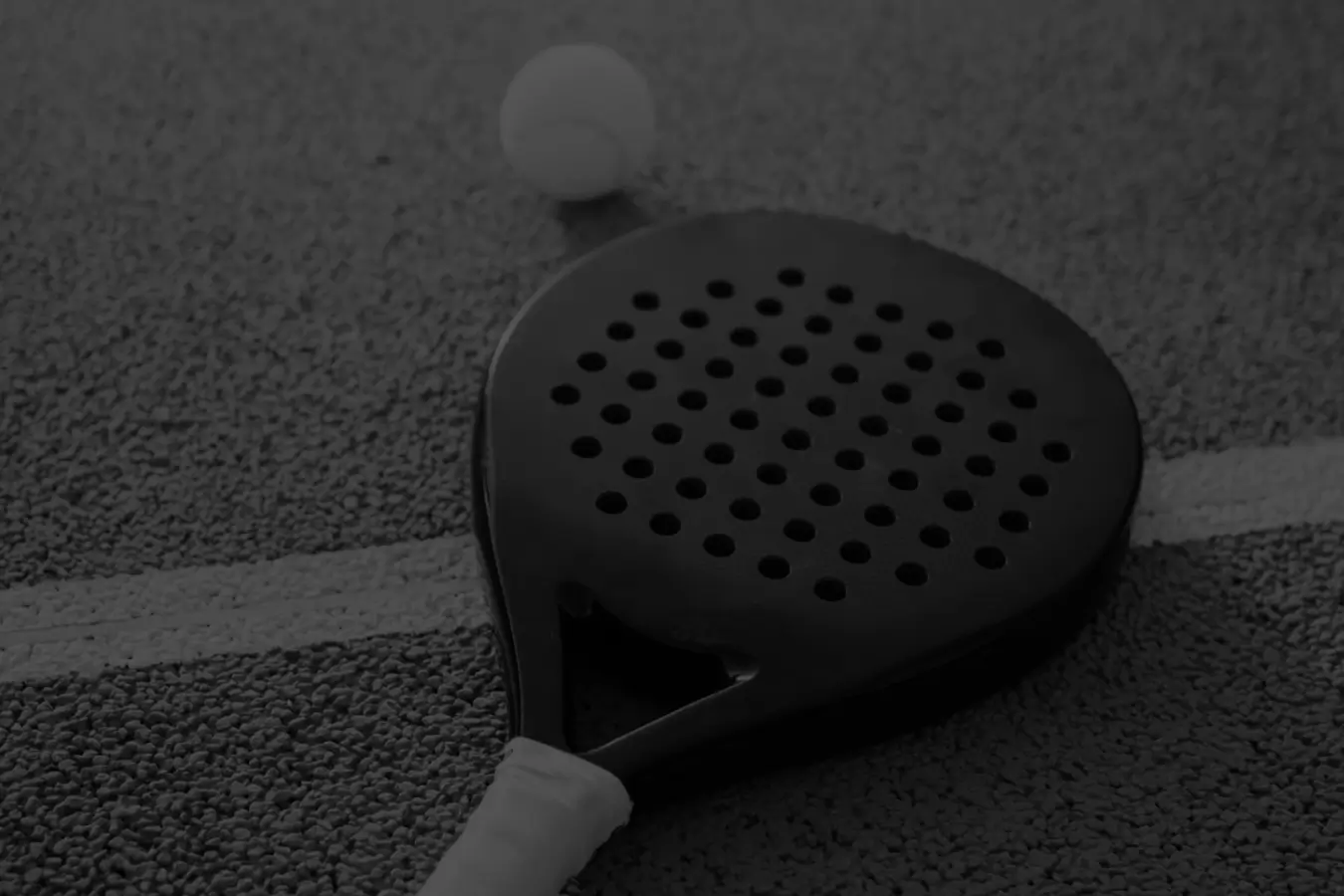


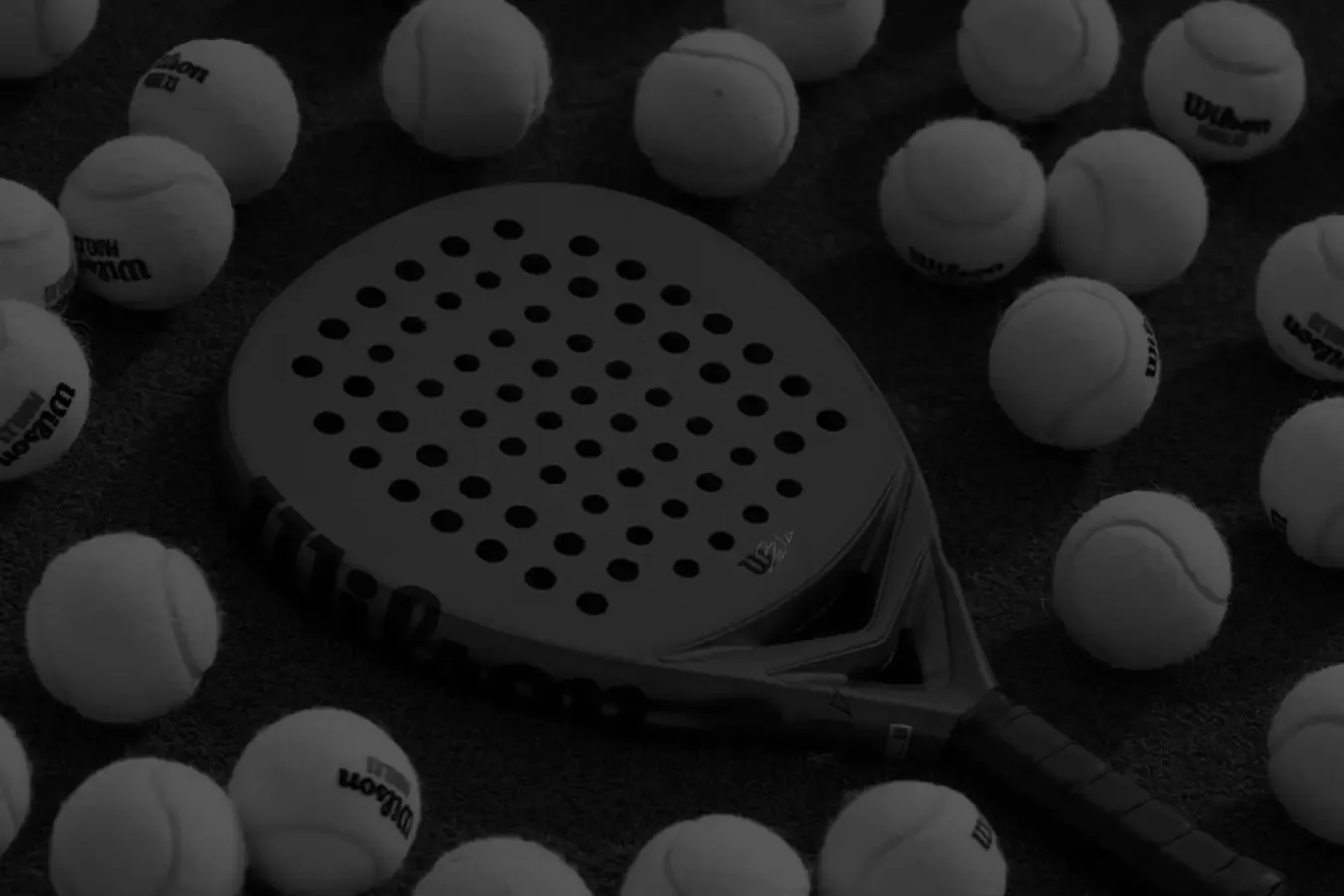
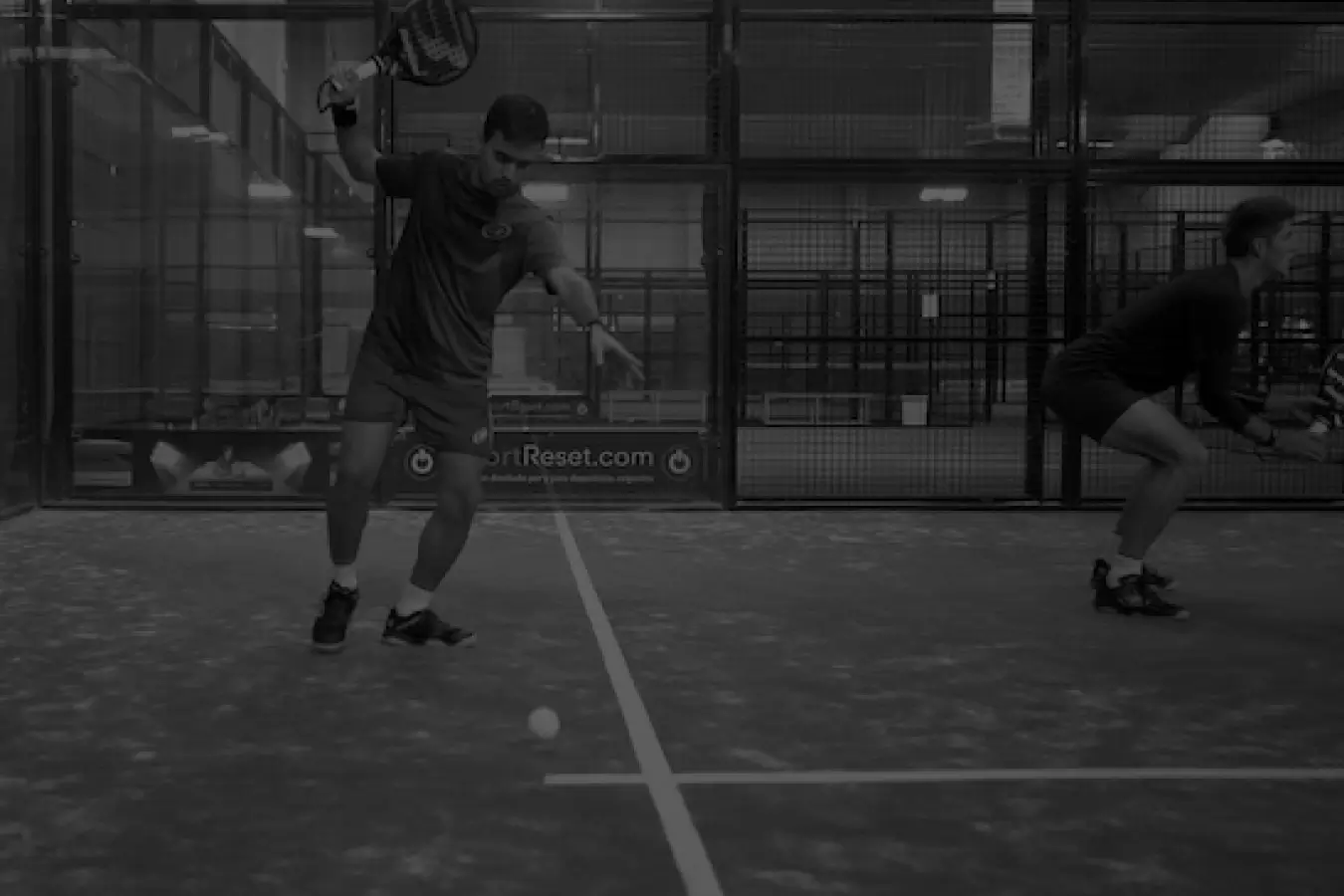
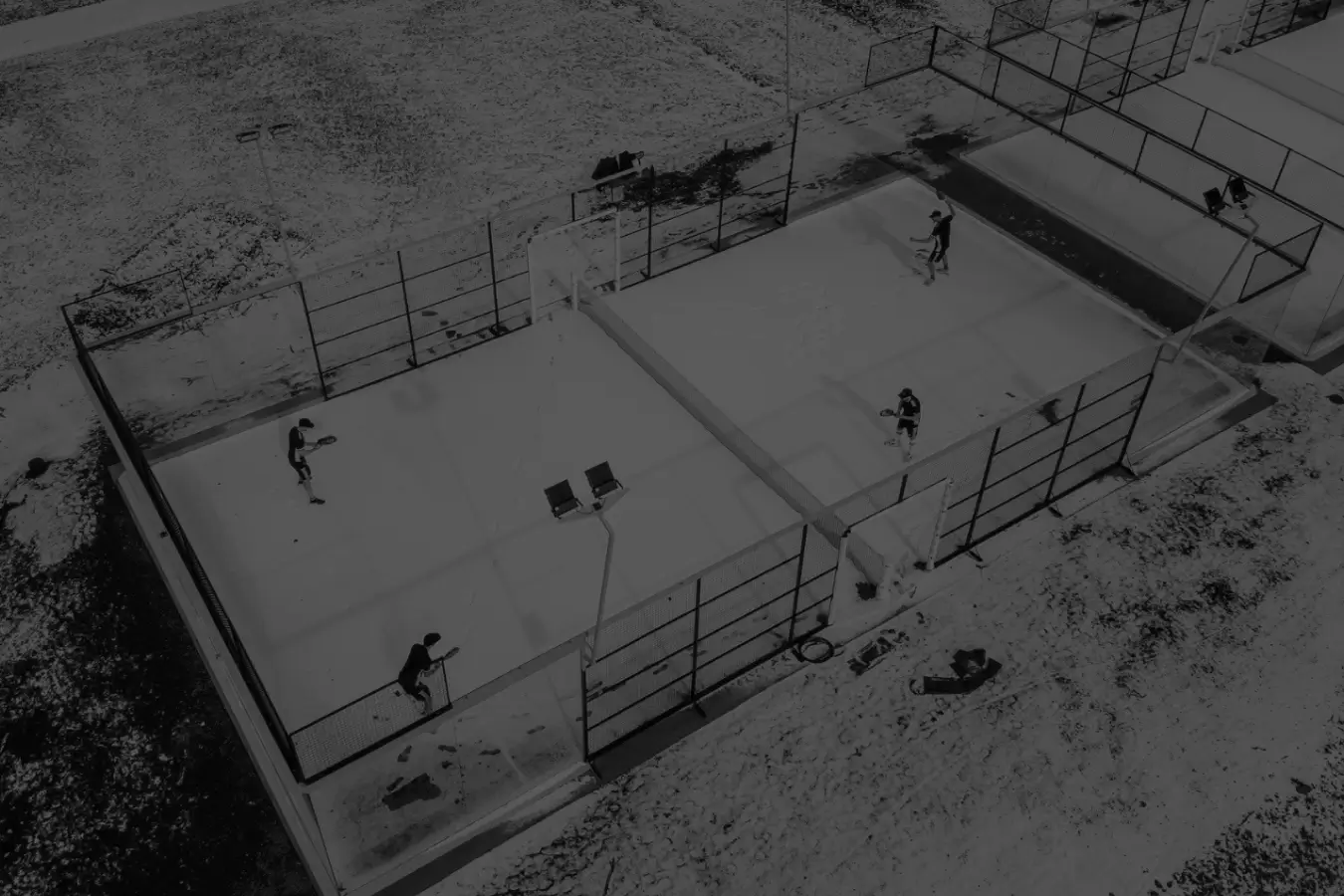
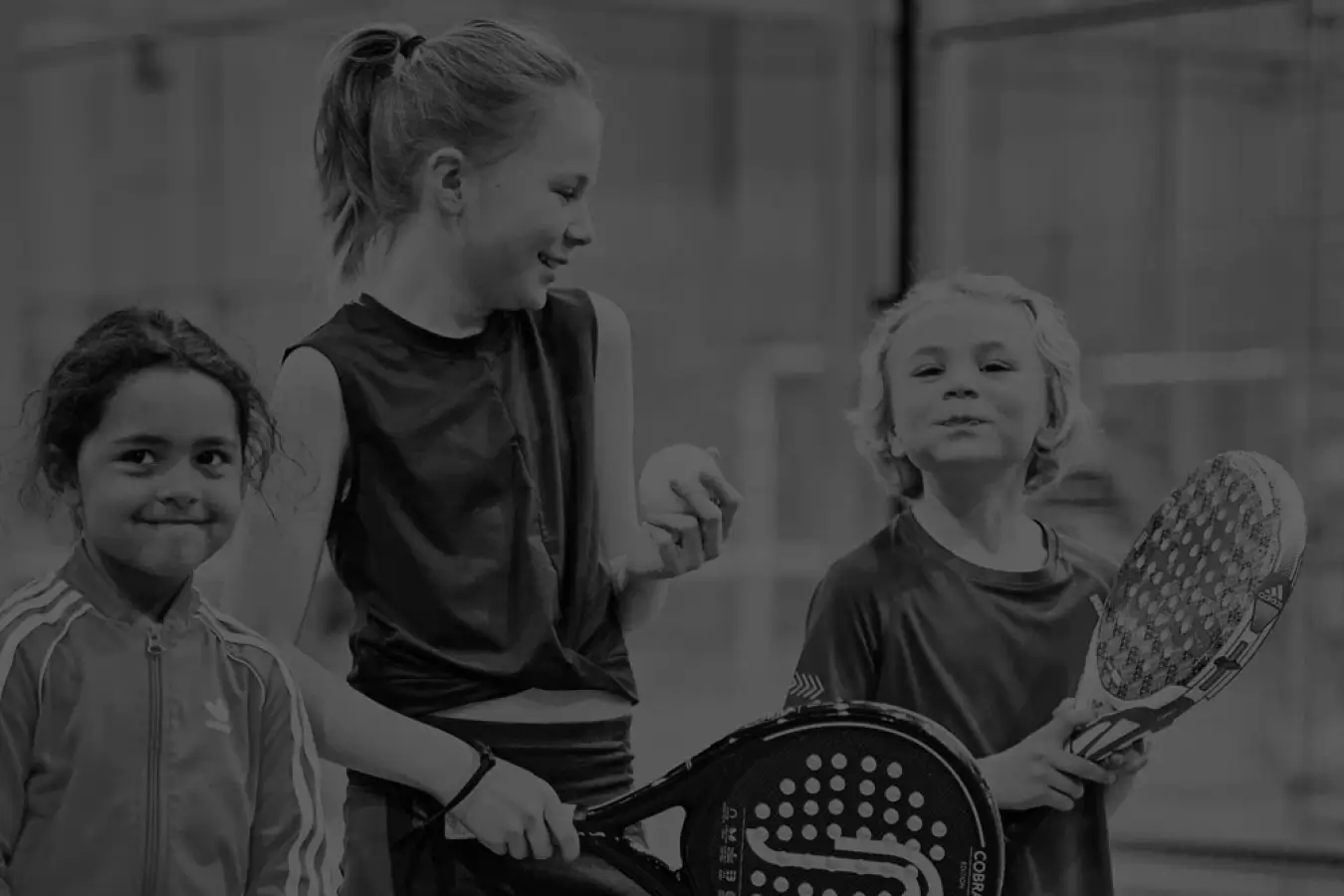
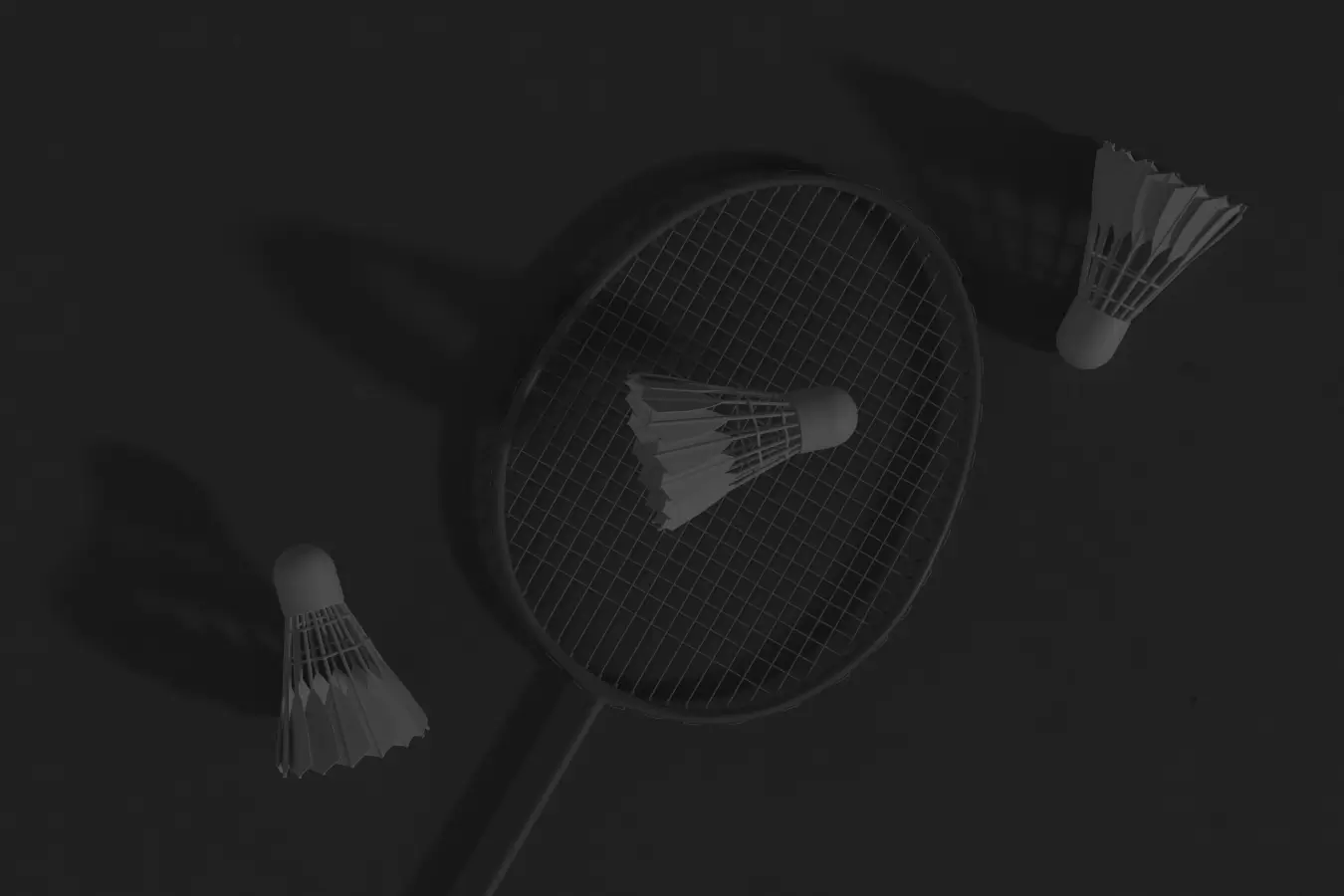
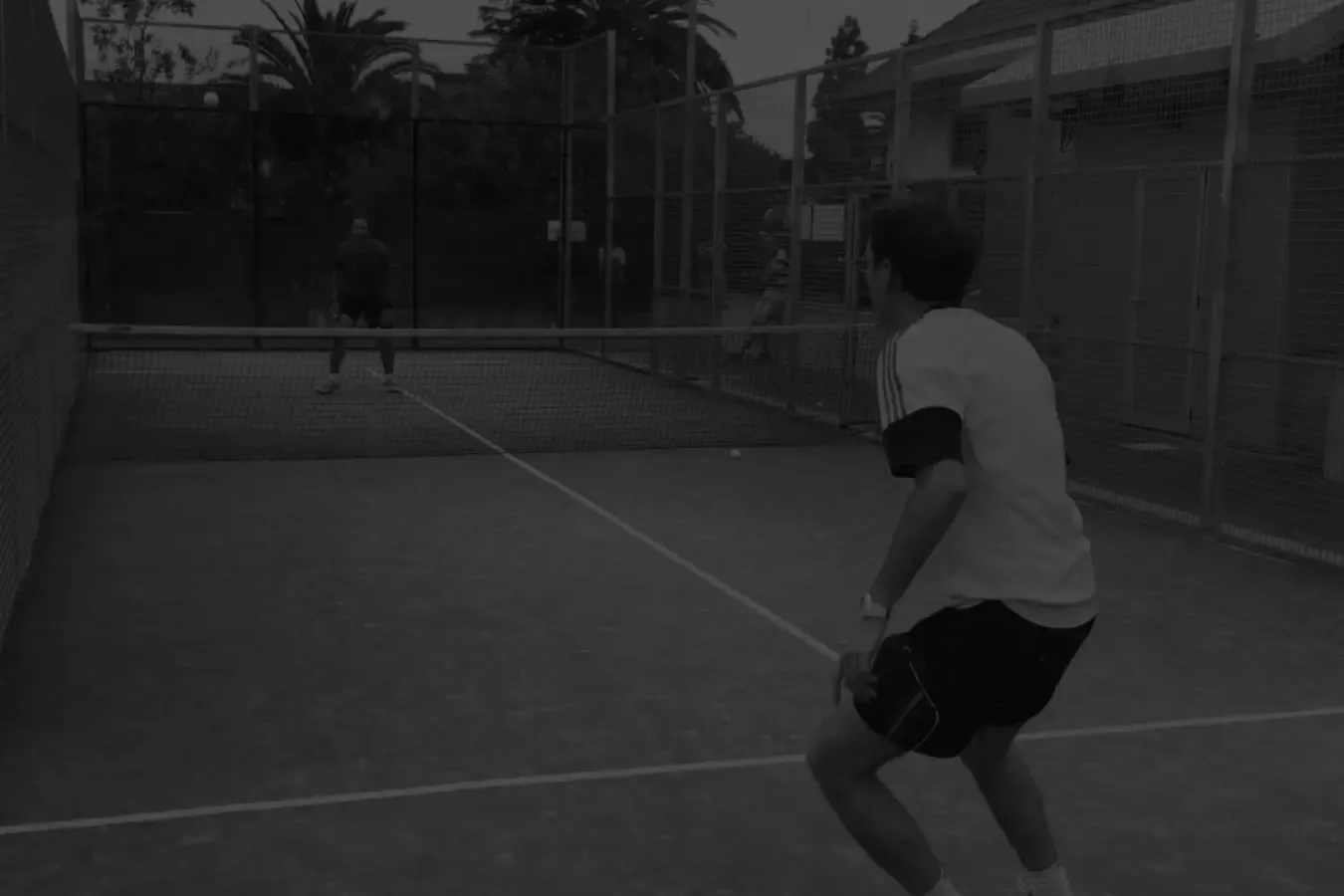
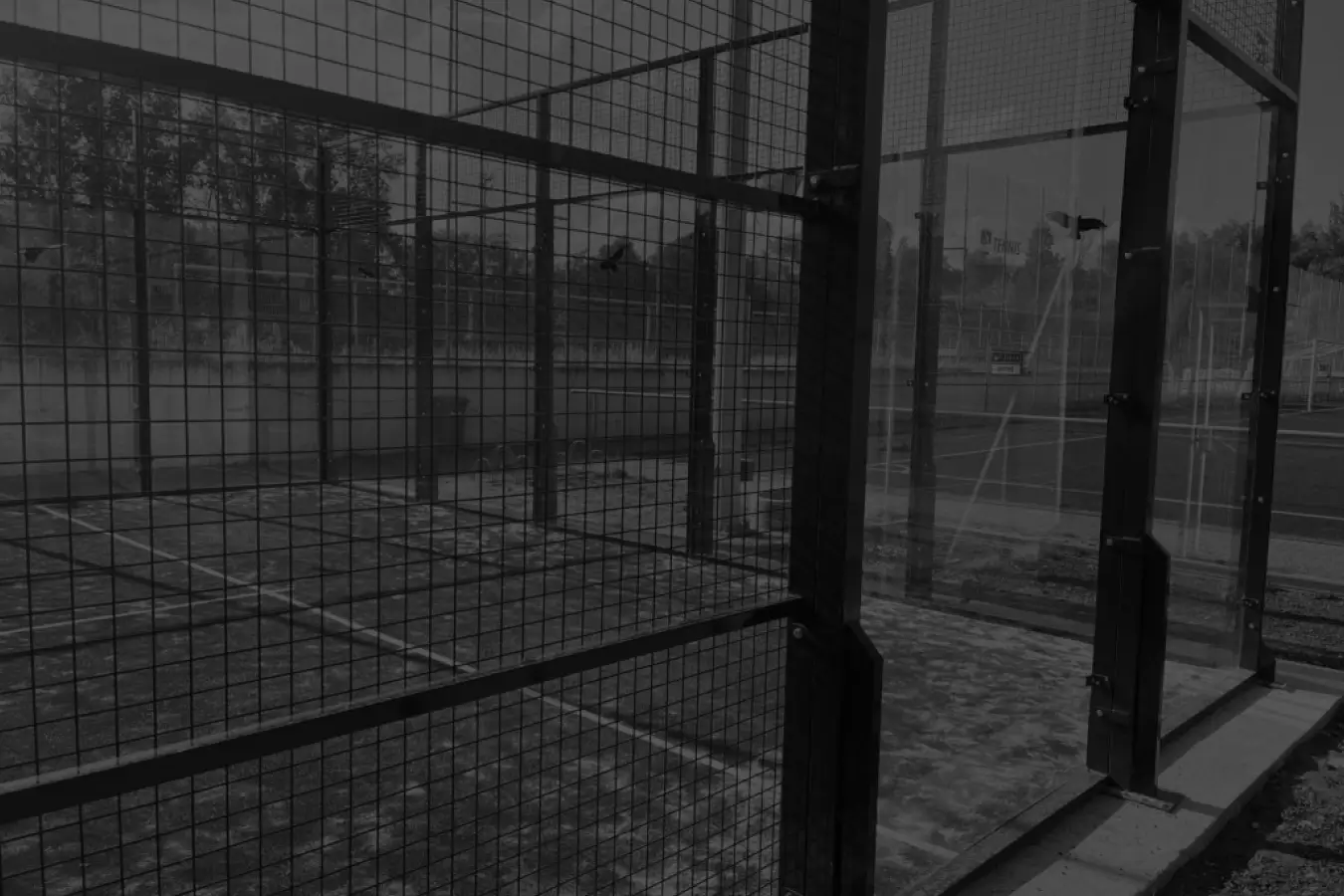

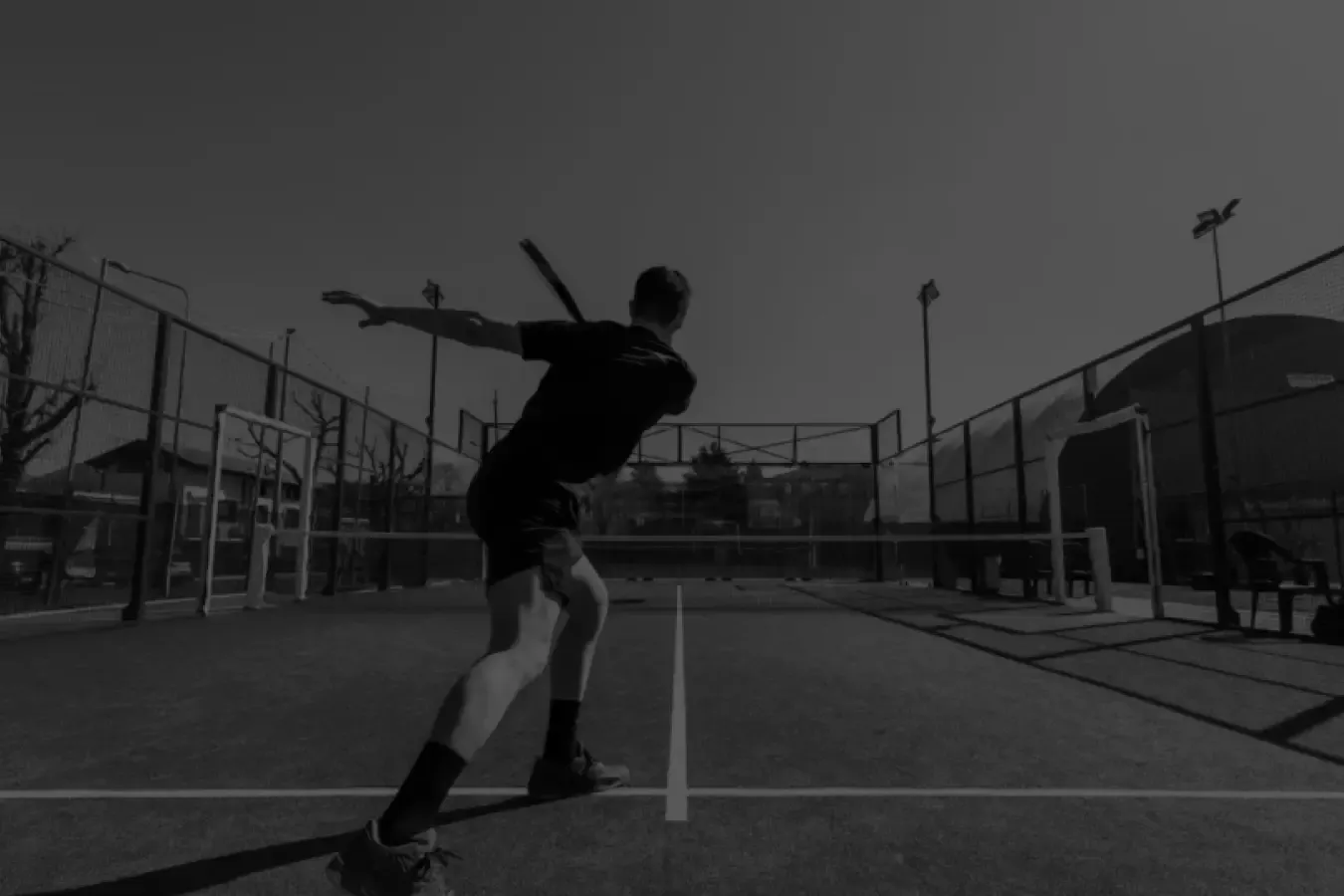

Discussion